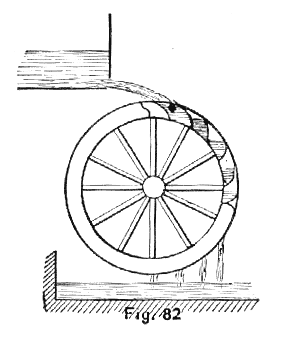The Medieval Twentieth Century
Today, two 20th-century thinkers look at the end of an era. One sees it. One does not. The University of Houston's College of Engineering presents this series about the machines that make our civilization run, and the people whose ingenuity created them.
In 1916 Henry Mercer finished building a castle of cast concrete in Doylestown, Pennsylvania. It was a museum to hold his collection of old wagons, fireplace tongs, spinning wheels, salt boxes. He'd collected all the remains of a civilization that he realized was about to vanish before his eyes. Today, Mercer's museum houses a whole class of technologies that had been unchanged for centuries in 1900 and were gone forever a few years later.
We get quite another slant on the same story when we look at a hydraulics text by Edward Bowser, who once taught civil engineering at Rutgers. Bowser published the book in 1885, twelve years before Mercer began building his museum. The last edition came out in 1921, five years after the museum opened.
The book offers a nice calculus-based course. It's hardly the cookbook instruction that too many engineers got a century ago. It reads like a medieval text in logic. Propositions are set in italics. They're followed by corollaries and scholiums.
Bowser provides hundreds of examples -- from the trajectories of water jets to the stability of ships. But then, tucked away among the examples, we see the same thing Mercer saw.
Medieval machines keep popping up, all through the book. Bowser shows how to calibrate a medieval water clock. He calculates the performance of a flap valve pump -- the kind sailors began using to pump bilge water from sailing vessels just after Columbus.
But the real surprise is a long section on every kind of water wheel -- undershot, overshot. Water wheels were the power source that took medieval Europe out of the Dark Ages. By the time Mozart was a kid, engineers were finally figuring out how to analyze them. When Bowser was born in 1845, modern water turbines were suddenly starting to put water wheels out of business. By the time his 1921 edition came out, a water wheel was as out of place on its pages as an oar-driven ship would've been.
So the transition that Mercer saw coming was the web that snared Bowser. Perhaps it helped that Mercer was trained as an anthropologist. He was able to see that technology was about to leave its medieval past behind -- suddenly, abruptly, and without a backward glance.
But Bowser's book sits there, with one foot in industrial America and the other in King Arthur's court. He was stuck in the same time warp that separates us by a thousand years -- from the technology of only a century ago.
I'm John Lienhard at the University of Houston, where we're interested in the way inventive minds work.
(Theme music)
Bowser, E. A., An Elementary Treatise on Hydromechanics, 7th edition. New York: D. van Nostrand Co., 1921. (Bowser was born in 1845 and died in 1910 -- 11 years before this last edition came out.)
Allen, F., The Tower of Tools. American Heritage of Invention and Technology, Spring/Summer 1989, pp. 26-31.
For more on Mercer and Mercer's Museum, see Episode 271 and Episode 1205. I am grateful to Pat Bozeman, Head of Special Collections, UH Library, for spotting the Bowser book and making it available to me.
See also the following website: http://en.wikipedia.org/wiki/Henry_Mercer

Bowser's schematic diagram of an overshot water wheel
From An Elementary Treatise on Hydrodynamics,1921. Image courtesy of Special Collections, UH Library.